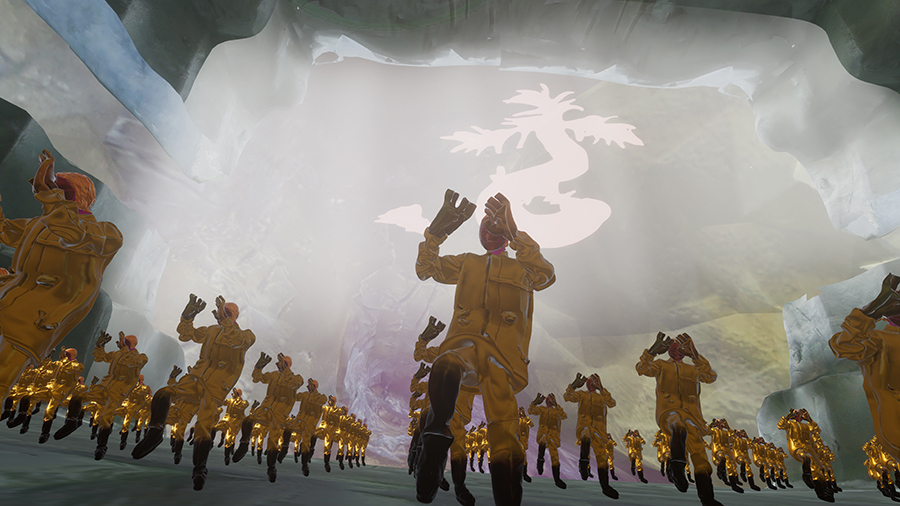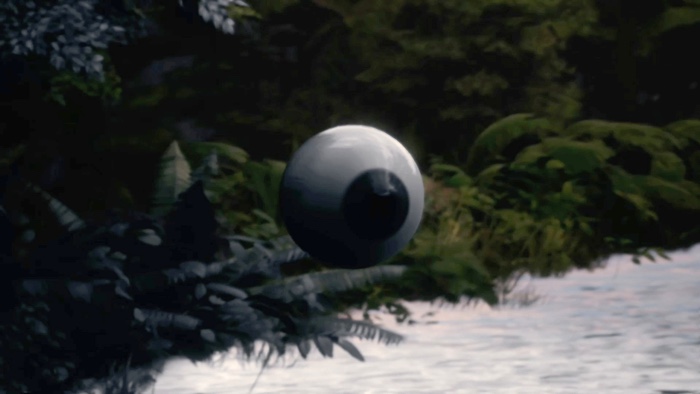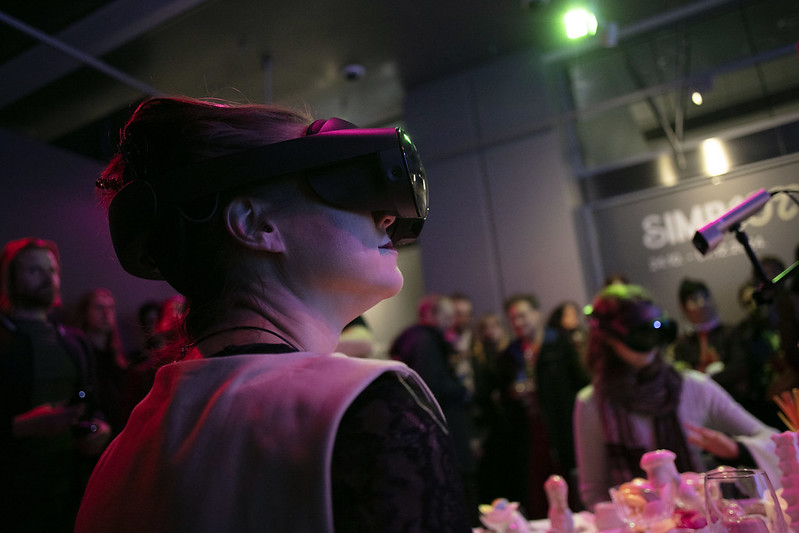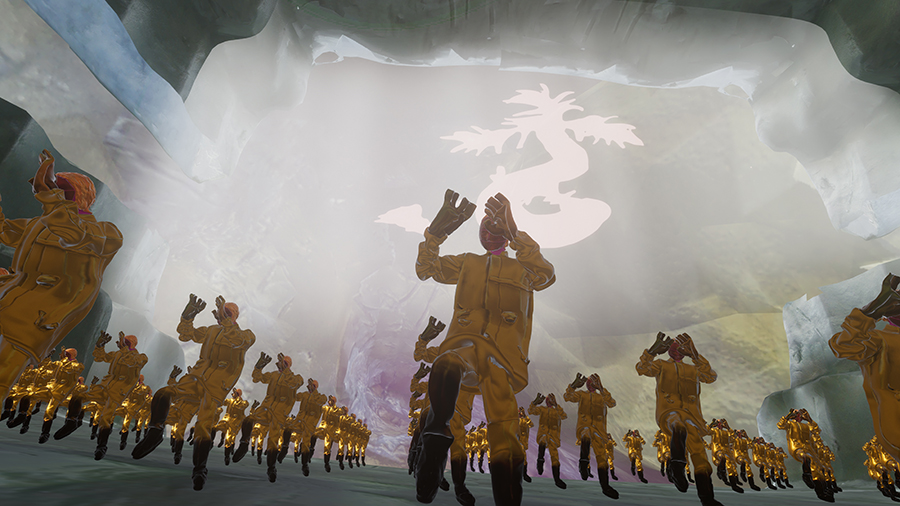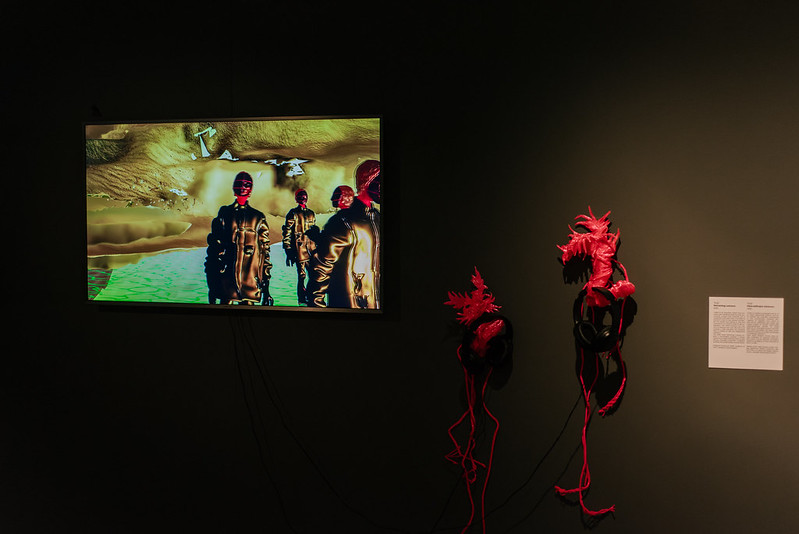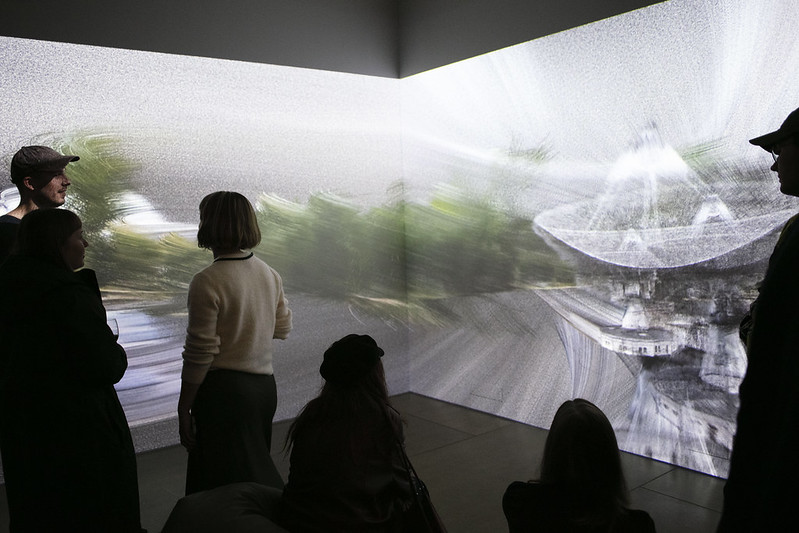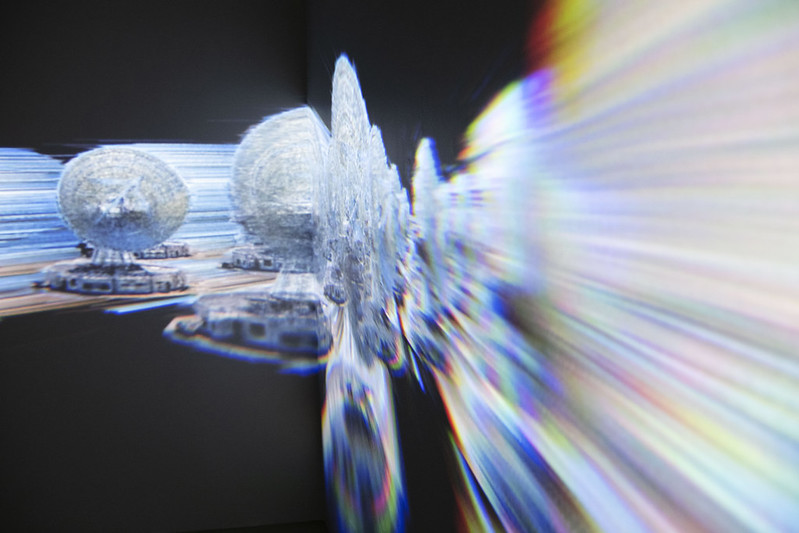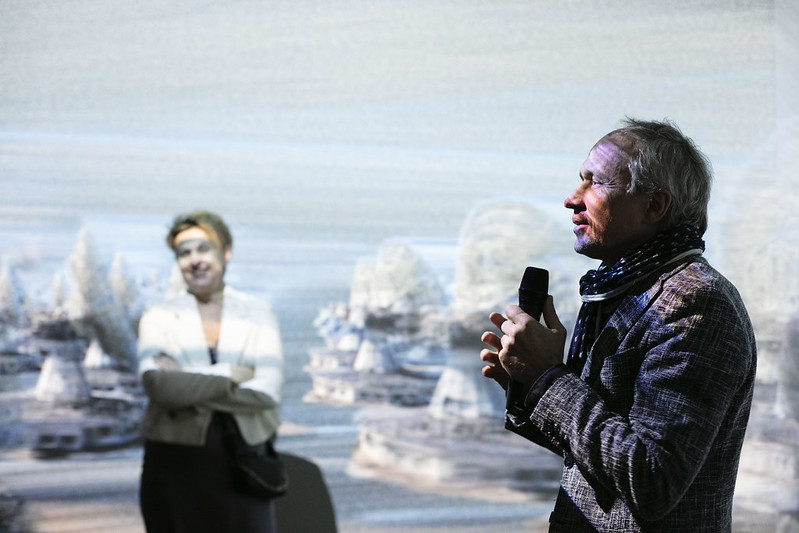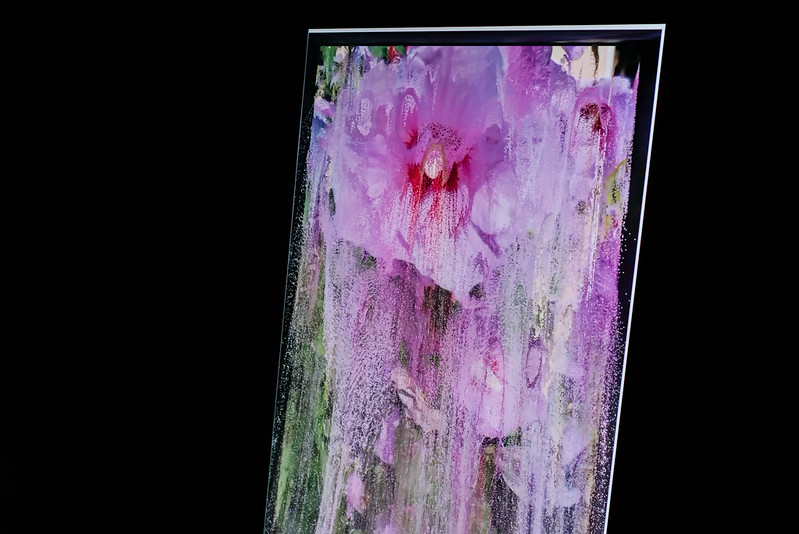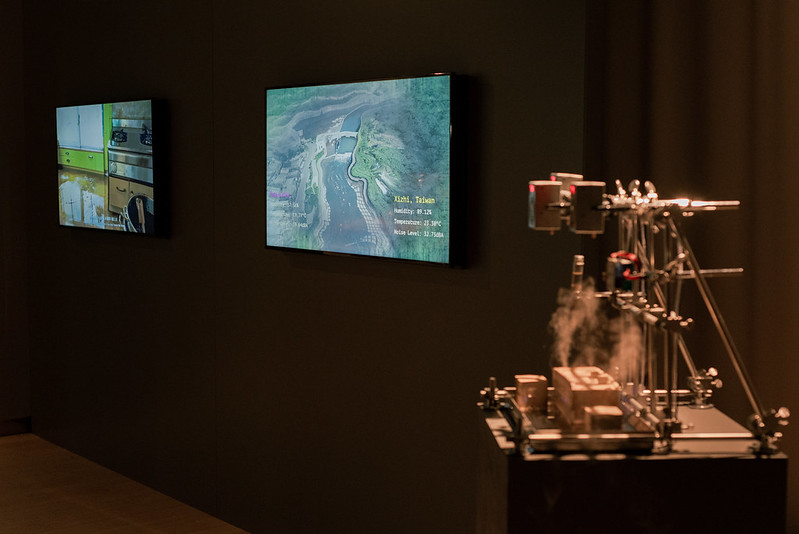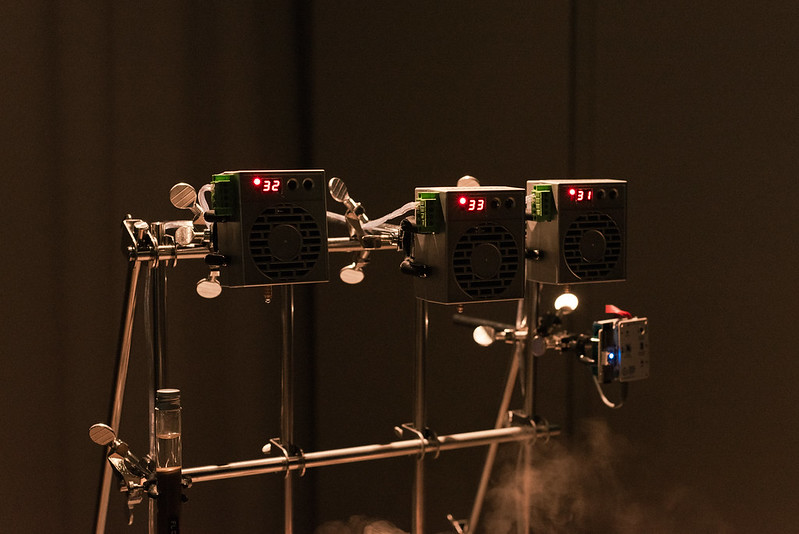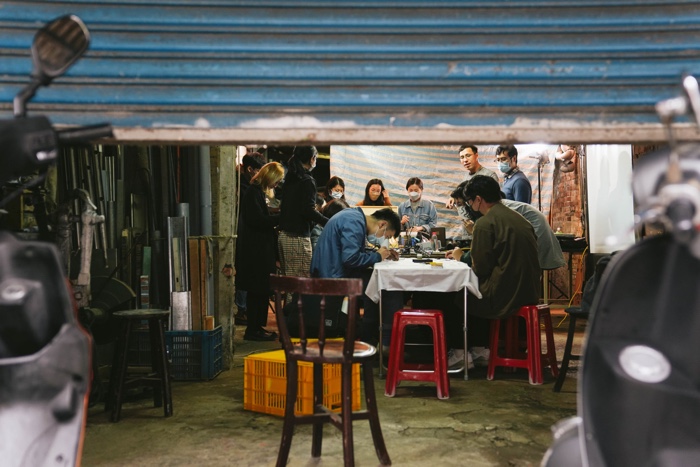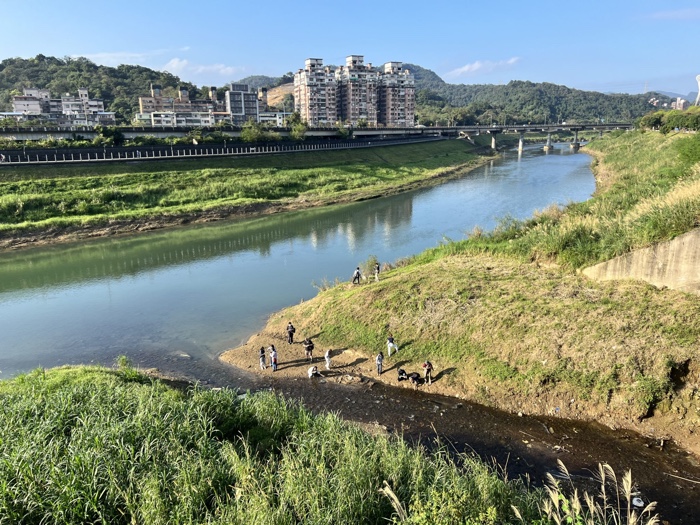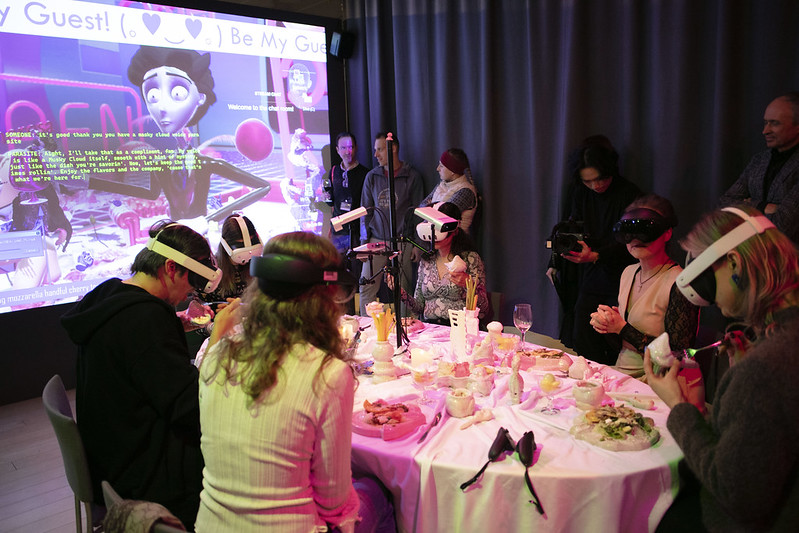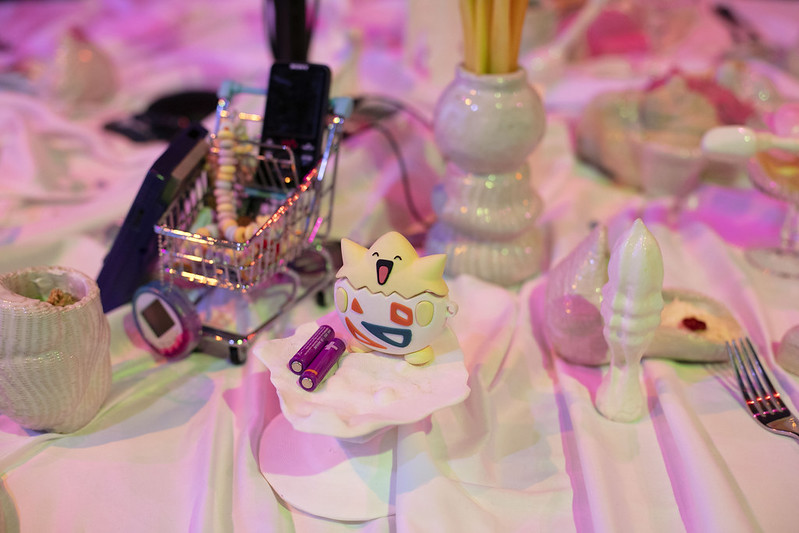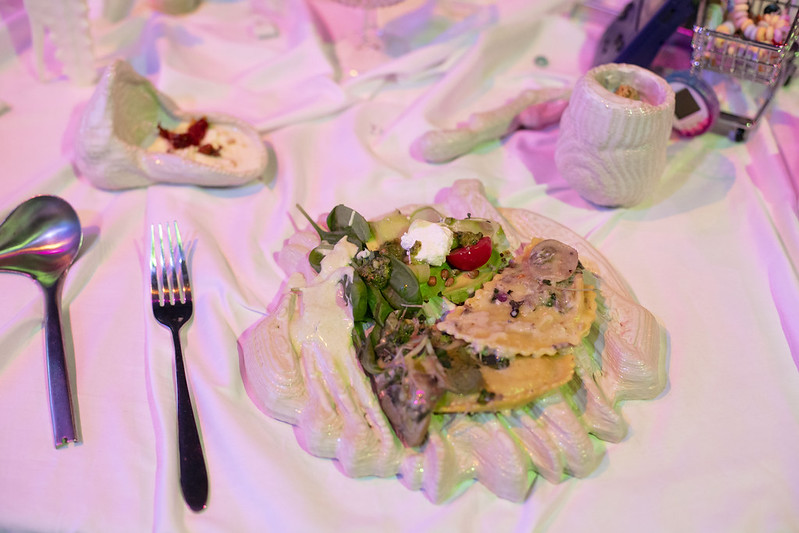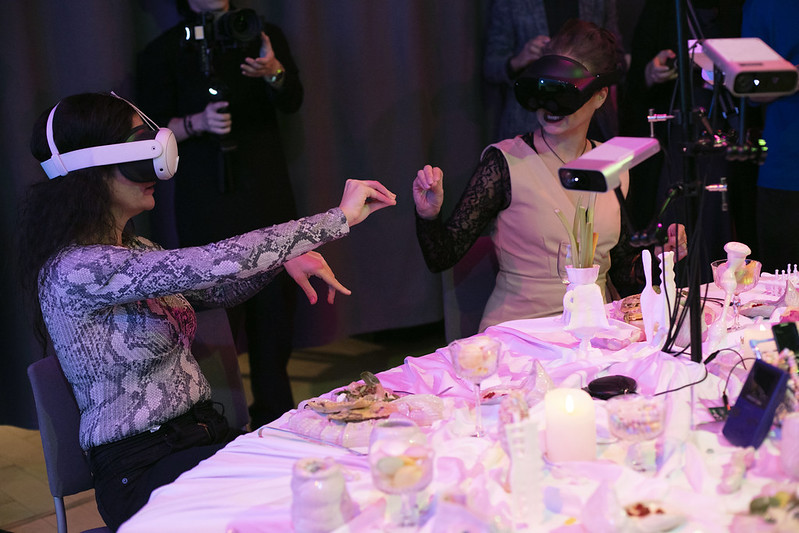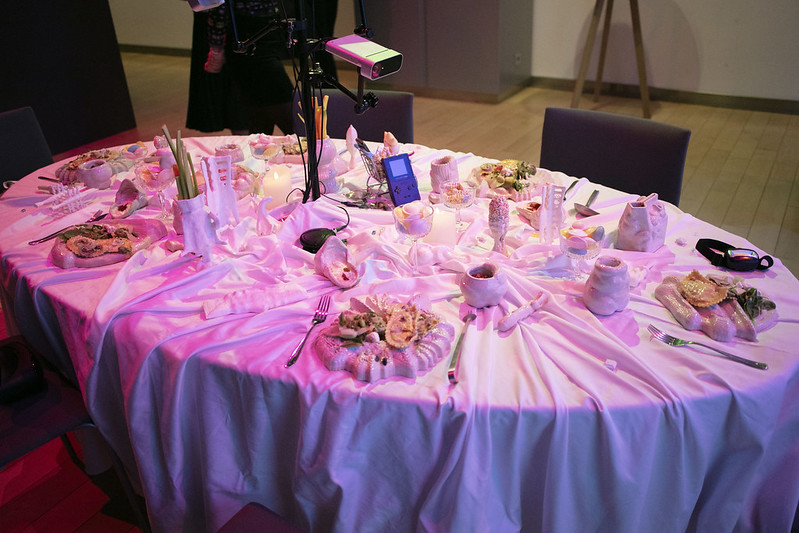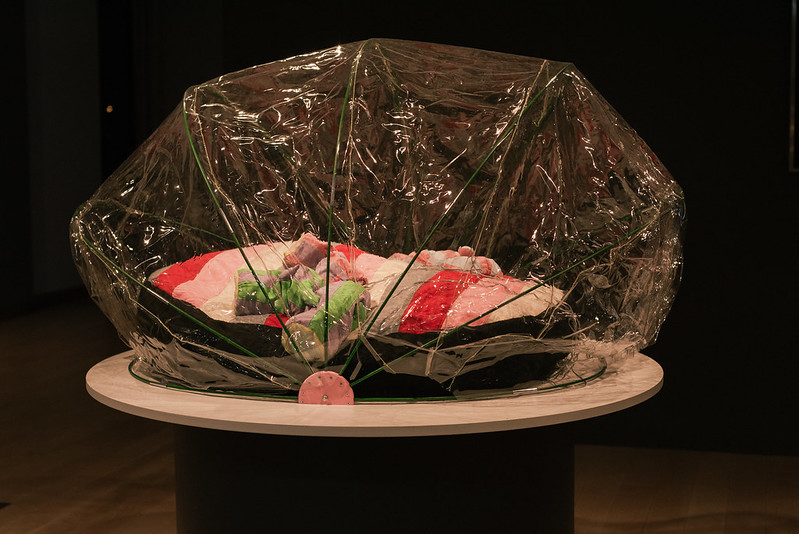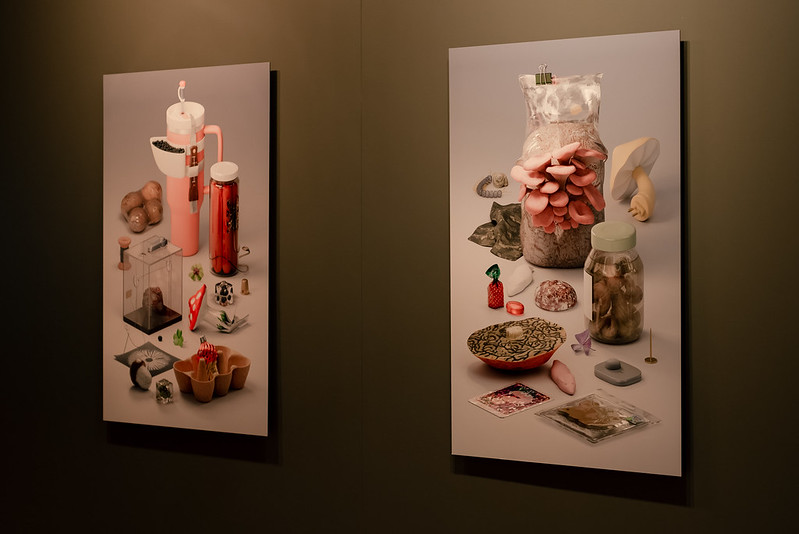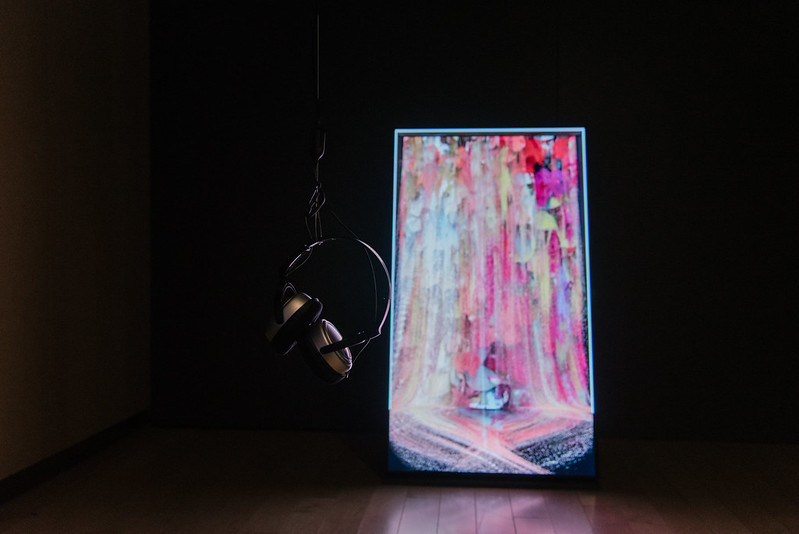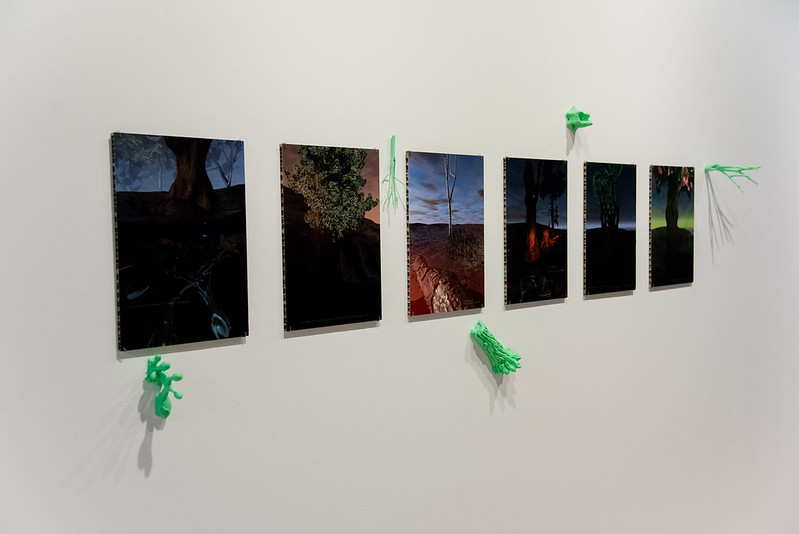Symbiotic Sense(s), an exhibition currently on view at the National Library of Latvia in Riga as part of the RIXC Art Science festival (see my notes on the conference), presents the work of artists who challenge the boundaries between self and other, human and other forms of life, natural and artificial.
T(n)C (Agnes Varnai and Tina Kult), Retraining Laziness, 2023
Sasha Litvintseva and Beny Wagner, My Want of You Partakes of Me (video still), 2023
Me AndOther Me, Be My Guest!, 2024. Performance for RIXC Art Science Festival 2024: Symbiotic Sense(s). Photo: Kristīne Madjare
Symbiotic Sense(s) is inspired by the work of evolutionary theorist and biologist Dr. Lynn Margulis who, in her 1991 book Symbiosis as a Source of Evolutionary Innovation, formulated the concept of the holobiont. The holobiont is an assemblage of a host and the many individual species living in or around it. Together they form an ecological unit. Reef-building corals and animal bodies are examples of holobionts. Her theory that interdependence was a key driver of evolution met with severe criticism, even derision. By stressing the importance of symbiotic or cooperative relationships between species, her theory challenged the mainstream competition-orientated views of evolution. Her ideas encountered resistance outside of scientific circles as well. First of all, because her theory of tiny and big species relying on each other didn’t sit well with the “survival of the fittest” doctrine that is still driving the capitalist rhetoric. But her theory also indicated a paradigm shift. Suddenly, humans were not at the apex of the world anymore; they were part of an intricate system in which each of their actions had repercussions.
By assessing the role of our senses and exploring the elusive ‘sixth sense’ as an extension of cognition beyond the human – both metaphorically and scientifically – the exhibition suggests that symbiosis defines our existence and that ‘symbiotic sensing’ is essential for our survival. Symbiotic Sense(s) presents works by artists affiliated with the European Media Art Platform (EMAP), as well as renowned Latvian and international artists, exploring the boundaries between human, machine, and nature, and envisioning new forms of sensing and collaboration towards a more symbiotic future.
Here are some of the works I found particularly interesting:
T(n)C (Agnes Varnai and Tina Kult), Retraining Laziness, 2023
T(n)C (Agnes Varnai and Tina Kult), Retraining Laziness, 2023. Exhibition view at the RIXC Art Science Festival 2024. Photo: Lelde Gūtmane
T(n)C (Agnes Varnai and Tina Kult), Retraining Laziness (trailer), 2023
The video Retraining Laziness is set in a place where humans and robots work alongside one another. We don’t know what their job is. They might not even know it themselves. They wear the same clothes, they are indistinguishable from one another. Until they start talking about the importance of work in their life.
Contrary to expectations -or better said, contrary to what technosolutionist narratives promised, work is the human’s main “raison d’être”. She strives to remain relevant and improve her productivity. She takes pride in not taking bathroom breaks and meticulously schedules all aspects of her life, even family interactions.
The robot, on the other hand, has experienced some kind of glitch. It / she has started to explore the meaning of life outside of work. The robot reminds the human worker that not so long ago, “some hoped that automation would free people from work” and that humans have now adopted the working style of a machine. While the human is weary of the detrimental effect that idleness would have on their personality, the robot wants to give laziness the dignity it deserves because it is “the foundation of progress,” “the origin of all arts.”
When we think of our future life with robots, we either picture an existence threatened by intelligent entities that have become far superior to us in many aspects, or (albeit less frequently than ever) we imagine that robots will allow us to enjoy a life of endless mirth and idleness. T(n)C proposes a more interesting (and strangely credible) scenario: a world where robots challenge capitalist imperatives and save human workers from their most destructive behaviours. The dialogue is light and smart. The artists reference Harun Farocki, borrow from historian André Rauch, (ironically) quote Elon Musk, are informed by self-help forums on the Internet where people share their experience on how to best manage their work-life balance, etc.
Rasa Smite and Raitis Smits, Deep Sensing, 2023. Photo: Kristīne Madjare
Rasa Smite and Raitis Smits, Deep Sensing, 2023. Photo: Kristīne Madjare
Rasa Smite and Raitis Smits, Deep Sensing, 2023. Photo: Kristīne Madjare
Deep Sensing is an immersive artwork informed by the historic RT-32 radio telescope located in Irbene, western Latvia. The 32-meter antenna was originally designed to receive signals from space and the atmosphere. Its existence remained secret until 1993, 2 years after Latvia regained independence from the USSR. It was taken over by the Latvian Academy of Sciences after the withdrawal of the Soviet Army in 1994.
Rasa Smite and Raitis Smits traveled to the Irbene radio telescope and translated the infrastructure into an immersive installation where the antenna is no longer a massive man-made artefact, but an intangible constellation of dots that display sound data. Deep Sensing thus makes visible the flow of electromagnetic waves that travel to us from the Sun, other planets, stars in other galaxies and even mysterious black holes, helping the public gain a deeper understanding of the convergence of cosmic radiation at a specific point on Earth.
Tatsuru Arai, Face Of the Universe, 2023. Exhibition view at the RIXC Art Science Festival 2024. Photo: Lelde Gūtmane
CIKE x EMAP. Interview with Tatsuru Arai and Boris Vaitovič about Face of the Universe
I’m going to be honest and admit that i’m not entirely sure i understand the idea behind Face Of the Universe. What i do know is that it is a stunning installation and i spent a ridiculous amount of time watching it.
Here’s what i think i understood (so please don’t quote me!): Solar energy is generated by nuclear fusion. Some of this energy travels to Earth so that trees and other plants can soak it up and turn it into usable forms that seed, feed and fuel the planet. Nearly all terrestrial life relies on this green production for survival.
Tatsuru Arai is researching flowers that bloom in cities around the world. Often grown by humans, these urban flowers are part of the history of the human, non-human and cosmic ecosystems born from the nuclear fusion energy of the sun. Arai calls them the “face of the universe.”
The installation the artist is showing in Riga uses artificial intelligence to process the shapes of the flowers that Arai encountered in Kosice during an EMAP residency. The shape of flowers is reproduced with an algorithm, and the images and music are generated by artificial intelligence simulation. The A.I. then recreates ancient painting techniques to transform the flowers into beautiful images that quickly disintegrate as if under the effect of nuclear energy.
Po-Hao Chi, Hydrospheric Sketch: A Sensorium of Moisture, 2024. Exhibition view at the RIXC Art Science Festival 2024. Photo: Lelde Gūtmane
Po-Hao Chi, Hydrospheric Sketch: A Sensorium of Moisture, 2024. Exhibition view at the RIXC Art Science Festival 2024. Photo: Lelde Gūtmane
Po-Hao Chi, Hydrospheric Sketch: A Sensorium of Moisture, 2024. Exhibition view at the RIXC Art Science Festival 2024. Photo: Lelde Gūtmane
Po-Hao Chi. Hydrophone Workshop of Traceability Project, Xizhi, New Taipei City, 2023. Photo by Lin Pei-Yi
Po-Hao Chi. Tracing Water Workshop of Traceability Project, Keelung River (Xizhi section), New Taipei City, 2023. Photo by Liu Ren-Ji
Hydrospheric Sketch looks at the sensory experience of humidity within the hydrosphere. The project focuses on the Xizhi district, an area of Taiwan that has experienced multiple episodes of flooding over the past few years.
In the past, people living in Xizhi had a close connection to the river: it was clean, quiet and it was part of their daily experience. Urban expansion and the construction of high embankments and other new infrastructures designed to control the movements of water have radically altered the experience of water in the area. For example, the noises of modernity have drown out the sound of the river. Unfortunately, that control over the rhythms of the water is hijacked by both climate change (experienced as the multiplication of typhoons and floods) and the massive use of land for urban development. Humidity is another constant in the lives of the inhabitants. The climate in Taiwan is so hot and humid that anyone who wants to avoid their clothes and furniture getting mouldy has to live with the background noise of both dehumidifiers and air conditioners.
Using workshops, field trips and AI, Po-Hao Chi investigates how the rain, the presence and movements of the river, even the air people breathe affect how Xizhi residents relate to water. The artist collaborated with local people to help them reconnect with the environment of the river. Together, they made waterproof hydrophones and brought them to the river to listen to its sound, they visited pumping stations, floodgates and other infrastructures that now govern the management of water in the area.
The artist incorporates recordings and footage of hydrological nodes, real-time environmental data and AI-generated documentary visuals based on local interviews to form a conceptual “sketch” that delves into the trade-off of development, the symbolic significance of water, and the gradual fading of cultural memory.
Me AndOther Me, Be My Guest!, 2024. Performance for RIXC Art Science Festival 2024: Symbiotic Sense(s). Photo: Kristīne Madjare
Me AndOther Me, Be My Guest!, 2024. Performance for RIXC Art Science Festival 2024: Symbiotic Sense(s). Photo: Kristīne Madjare
Me AndOther Me, Be My Guest!, 2024. Performance for RIXC Art Science Festival 2024: Symbiotic Sense(s). Photo: Kristīne Madjare
Me AndOther Me, Be My Guest!, 2024. Performance for RIXC Art Science Festival 2024: Symbiotic Sense(s). Photo: Kristīne Madjare
Me AndOther Me, Be My Guest!, 2024. Performance for RIXC Art Science Festival 2024: Symbiotic Sense(s). Photo: Kristīne Madjare
Social media have brought about a hyper-aestheticization of food. Snacks and dinners are now “inspirational” rather than nourishing. The Insta-friendly food trend has changed not only the way we eat but also what we eat. Me AndOther Me‘s project and performance Be My Guest! investigates the growing socio-cultural role of AI models in our lives, now and in the future. Through a communal dinner hosted by an AI, featuring cutlery, ceramic plates and even dishes designed by an AI, the project asks questions such as, What happens to the human experience when AI becomes our dinner host, co-creator of the spatial experience and co-author of the menu? How can we work together with technology to reclaim the communal aspect of food? How can a mundane collective ritual reflect our current condition of dwelling in multiple realities?
More images from the Symbiotic Sense(s) exhibition:
Mónica Rikić, in collaboration with Gema FB Martín, Hipèrbole, 2023. Exhibition view at the RIXC Art Science Festival 2024. Photo: Lelde Gūtmane
Santa France, Still Life with Fruiting Bodies, 2024. Exhibition view at the RIXC Art Science Festival 2024. Photo: Lelde Gūtmane
Tatsuru Arai, Face Of the Universe, 2023. Exhibition view at the RIXC Art Science Festival 2024. Photo: Lelde Gūtmane
Sabīne Šnē, We Belong to Them, 2024. Exhibition view at the RIXC Art Science Festival 2024. Photo: Lelde Gūtmane
Previously: Symbiotic Sense(s). Queer plants, polar bears and peatland.
The Symbiotic Sense(s). RIXC Art Science 2024 Festival Exhibition is on view until 7 December 2024 at the National Library of Latvia in Riga.
Previously: Symbiotic Sense(s). Queer plants, polar bears and peatland.
